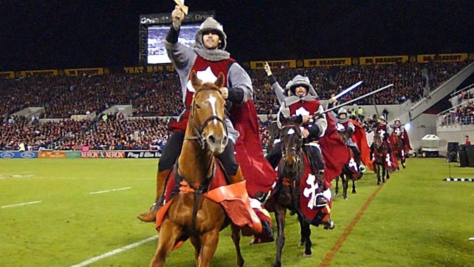
As director of a Johannesburg based residential property development company, Laurence Grigorov enjoys various forms of exercise and activities including gym work and mountain-biking.
Laurence Grigorov firmly believes that a healthy work-life balance should include regular exercise as well as a healthy, well-balanced diet which not only is good for your health but also for your mind and body.
So, what is a meal plan?
It sounds like a simple question right?
Well, wrong.
I’ll explain why:
A meal plan is a step-by-step outline of what a person’s diet “should” consist of for a day or a week or any time designation, really. A plan typically details the food types, portions, and the time of day each meal is eaten.
A planned meal might look something like this:
Lunch
1/4 cup brown rice
3 oz. chicken breast
1 cup spinach
6 raw almonds
1 cup dandelion tea
Now, there are some problems with this style of dieting. Let me take you through them:
Problem 1: No Variety
Some people like the idea of a structured plan because they feel it will hold them accountable and also take the guesswork out of eating. Sure, it helps in those ways—for the first two or three weeks, but that doesn’t take into consideration the long term.
What happens when you want to go out to lunch with friends? When your partner surprises you with breakfast in bed? When you’re traveling for work? When your kids get sick, when it’s someone’s birthday, or you simply don’t feel like drinking a protein shake as your afternoon snack anymore?
That’s life happening. In a dream world, structured meal plans are great, but in reality (the world I live in), meal plans can be extremely rigid, restrictive, and simply hard to sustain if you’re trying to live a full, well-rounded life. That leads to the next problem.
Problem 2: It’s Not Sustainable
Maybe this sounds familiar: You follow a plan to a T for a while, but you end up hating it. You may see some short-term results, but you get turned off by the lack of variety and stray from the plan. Then, when you eat something not on your plan, you feel like a failure because you couldn’t stick with it.
The main issue here is that you’re aiming for perfection, demanding 100 percent adherence of yourself, until you feel so restricted you snap. And we’re not talking about a few potato chips. Don’t be surprised if you find yourself elbow deep in a Costco-sized bag of chocolate caramel popcorn with a trail of Oreo crumbs behind you and peanut butter in your hair. Introducing Problem 3.
Problem 3: The Risk of Developing Disordered Eating
How often have you heard someone say (or maybe this is you), “I’m so good during the week, but then I blow it on weekends.” Well, it’s not completely your fault.
Psychologically, the more you deprive yourself, the more you want what you can’t have, and when you’re too strict for too long, a rigid meal plan can elicit some very disordered eating habits, and things can get out of control very quickly. When you awaken from those binge blackouts, you’re left feeling guilty, fatigued, and disappointed in yourself. So, what do you do? Jump right back on the plan that lead to it all in the first place.
“I’ll start my meal plan again on Monday and I’ll be perfect this time!” And so the cycle continues: diet, give up, diet, give up—for months or even years on end until you actually learn something about healthy eating. But you won’t get that from a meal plan.
Problem 4: Meal Plans Don’t Teach You Anything About Nutrition
You don’t learn anything about the importance of macronutrients, micronutrients, fibre, portion control, moderation, or caloric balance from a meal plan. At best, a meal plan teaches you how to follow directions.
What happens when the meal plan ends or your 4-week challenge is over? What have you learned? Likely, you aren’t going to eat the same five foods for the rest of your life. Did you learn what types of foods or food groups best fuel your workouts? Did you learn what types of foods help you recover? Did you learn how to read a nutrition label or how to stay on track when your prepped food isn’t available? Did you learn what foods offer what vitamins and minerals?
In order for your nutrition program to ensure lifetime success, it must be both educational and sustainable.
Program for a Lifetime
If you can’t do it for the rest of your life, it probably isn’t a good idea. Before diving into keto, intermittent fasting, paleo, or any nutrition protocol, ask yourself if you can follow it forever. If your answer is not a “hell, yes,” you probably won’t see the lasting results you desire.
You need a back-up plan, one you can stick with. Enter the notion of flexible dieting.
Flexible dieting isn’t necessarily a “diet,” at least not the way you think of it. Most people associate diets with food restriction, hunger, and misery. That is not what this is.
Flexible dieting is an assessment of your caloric needs broken down into appropriate macronutrient goals. These are the amounts of carbs, fats, and proteins needed to optimize your body composition and performance. Basically, you have daily allowances of calories, carbs, fats, and proteins that are customized to your body, goals, dieting history, and activity level. You can calculate these numbers using a macro calculator, and track them in a food tracking app.
Diets end, but this will enable you to eat and live in balance. Will you have to track macros for the rest of your life? Of course not. The idea is to learn the basic yet essential principles of nutrition as you go.
The Basics of Flexible Dieting
Variety: You should be eating a variety of foods from each food group to get all the nutrients your body needs. Your daily food selection should include carbohydrates, proteins, and fats, as they are essential to your health. You must get them from your diet because the human body cannot produce them.
Moderation: You’ve probably heard before that dieting is all about portion control. Flexible dieting teaches you how to do this since there are no restrictions on your food choices—everything can and should be eaten in moderation.
Balance: In terms of nutrition, balance refers to your caloric intake versus your caloric expenditure. If you take in more calories than you burn, you will gain weight. If you burn more calories than you take in, you will lose weight. Flexible dieting allows you to learn how much food you need to meet your goals.
This isn’t a free-for-all, but it will allow you to eat what you want, when you want. I don’t advise eating junk all the time, but I encourage you to focus on eating what you’d like within reason, provided that it fits within your daily allotment of calories and macronutrients. A good starting point is the 80/20 rule. Aim for at least 80 percent of your food choices to come from wholesome, nutrient-dense sources and the other 20 percent from the fun stuff you crave or things you would eat on special occasions.
Flexible dieting means you can go out to dinner with friends and know how to make informed decisions about the menu options. It means you can travel for work and find something to eat at the airport without worrying about your food list. It means going to your kid’s birthday party and being able to enjoy a piece of cake without “ruining” your diet or feeling that you failed.
Everyone wants to look good, feel good, and perform well. Flexible dieting could be the missing link you need to maximize your results while still enjoying life!
Words and image courtesy of www.bodybuilding.com

